11 Wonderful Flowers That Start with W + Growing Guide charts

This post follows our research editorial guidelines.

Watching wonderful wildflowers winding through woodlands is a worthy way to waste an afternoon. It’s within reach to widely work them into window boxes or wherever in your world you want to witness them. Whatever you wish for there’s a wonder that works.
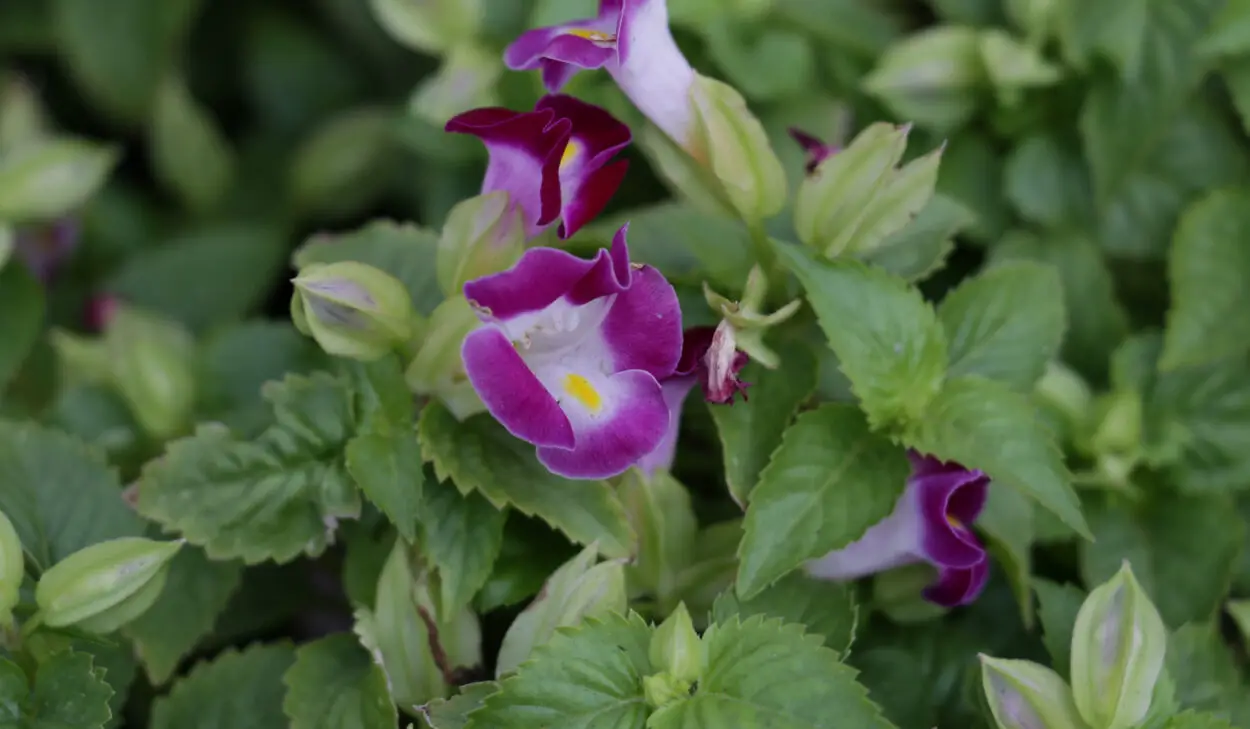
I’m walking along my wee list of the most whimsical flowers I’ve watched in the garden, in alphabetical order. I’ve wandered along to the letter ‘w’!
Quickly Find Flowers That Start With W
1. Wandflower (Sparaxis tricolor)

Spectacular wandflowers are also known as harlequin flowers and for good reason. They’re vividly colored, with wide six-petaled flowers glowing in shades of red, orange, black and yellow.
These perennials are a bit on the short side, sitting at comfortably two feet tall or thereabouts, but they certainly make up for that with the sheer vitality of their blooms. They serve as an excellent feature plant, just right for spacing with taller blossoms or more ground-hugging creepers.
| Botanical Name: | Sparaxis tricolor |
| Growth Rate: | Moderate |
| Native Range: | South Africa |
| Hardiness Zones: | 8 to 11 |
| Soil Needs: | Fertile organically rich sandy or loamy soils |
| Exposure: | Full sun to partial shade |
| Blooming Period: | Spring |
| Water needs: | Low |
2. Wallflower (Erysimum cheiri)

Wallflower by name and wallflower by nature, these glowing miracles will set root in the sandiest, most inhospitable pockets of soil wedged in walls and rock gardens. They produce luminous sprays of golden flowers, tightly bunched and deeply fragrant.
This tenacity and vigor make them excellent residents of arid gardens, especially tucked in otherwise inhospitable borders. They’ve been popular since the Middle Ages, and these days the bright yellow original has been cultivated into orange, burgundy and chocolate varieties.
| Botanical Name: | Erysimum cheiri |
| Growth Rate: | Moderate |
| Native Range: | Southern Europe |
| Hardiness Zones: | 7 to 9 |
| Soil Needs: | Loose, sandy soils with good drainage |
| Exposure: | Full sun to partial shade |
| Blooming Period: | Late spring to summer |
| Water needs: | Low |
3. Willow bell (Campanula persicifolia)
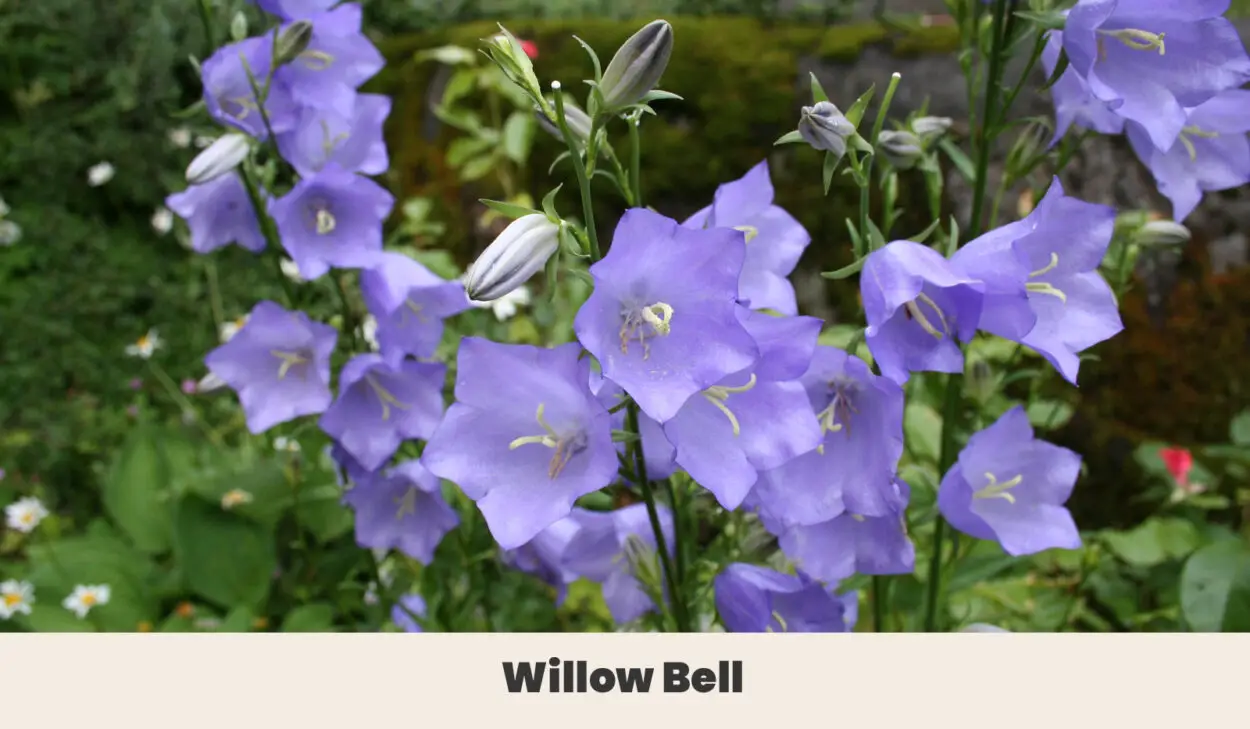
Wild willow bells are summer stars in the field, gentle purple five-pointed bell-shaped blooms atop soaring stalks. Domestic varieties have been developed to emphasize that celestial quality with white or pale blue blossoms in addition to the classic pale purple.
They’re easy growing, forming clumps that divide well every four years or so, and they also self-seed readily. Large galaxies form with little effort at all, much to the joy of human and animal fans alike. They’ll draw all kinds of beneficial insects into the garden with their starry blooms.
| Botanical Name: | Campanula persicifolia |
| Growth Rate: | Moderate |
| Native Range: | Europe, Central, and Western Asia |
| Hardiness Zones: | 3a to 7b |
| Soil Needs: | Organically rich sandy or loamy soils |
| Exposure: | Full sun to partial shade |
| Blooming Period: | Summer |
| Water needs: | Moderate |
4. Wild indigo (Baptisia tinctoria)
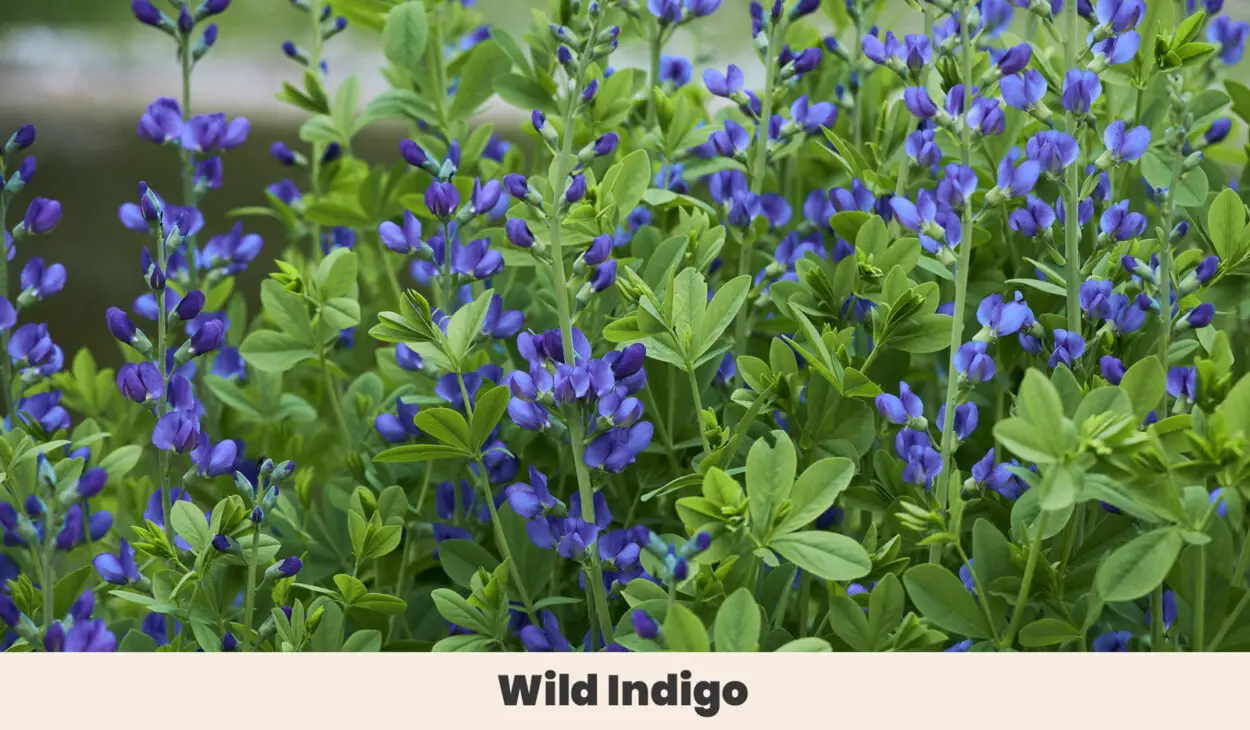
Also known as horsefly weed, the wild indigo is a vigorous wildflower from the pea family. It’s often the first flower to show up in fire-ravaged fields or woodlands, using the legume’s special nitrogen-fixing magic to turn scorched earth into fertile soil.
They also help encourage insects to return, and their golden blossom blooms are especially loved by native bees. These properties also make them a great choice for poor-quality soils, and to prevent erosion in exposed patches of the garden.
| Botanical Name: | Baptisia tinctoria |
| Growth Rate: | Fast |
| Native Range: | Eastern United States |
| Hardiness Zones: | 3 to 9 |
| Soil Needs: | Sandy, loamy soils |
| Exposure: | Full sun to partial shade |
| Blooming Period: | Spring to summer |
| Water needs: | Low |
5. Wild strawberry (Fragaria vesca)
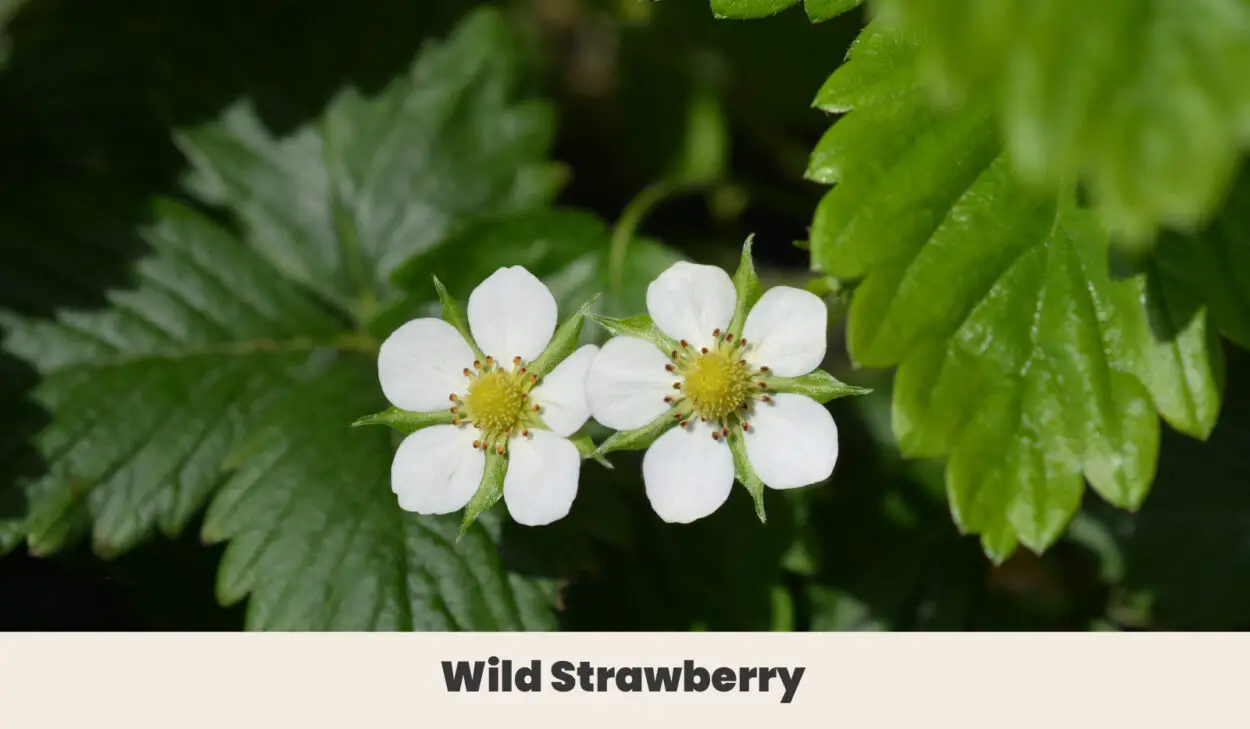
They say good things come in small packages, and this is certainly true when it comes to wild strawberries. As an ornamental they serve beautifully as a ground cover, growing cheerfully between paving stones or around rocky borders.
Its leaves and flowers are delicate and charming, and the resulting fruit is equally as diminutive and sweet. Each tiny berry is flavor-packed, a real late-season treat for wildlife and people alike.
| Botanical Name: | Fragaria vesca |
| Growth Rate: | Slow |
| Native Range: | Alpine regions of Europe and Asia |
| Hardiness Zones: | 5 to 9 |
| Soil Needs: | Organically rich, moist soils of most types. |
| Exposure: | Full sun to partial shade |
| Blooming Period: | Spring to summer |
| Water needs: | Moderate |
6. Wax Begonia (Begonia x semperflorens-cultorum)

Wax begonias possess an old-fashioned charm that makes them great additions to cottage gardens. Their glossy flowers are small but abundant, in shades of white, pink, yellow, and red.
They’re far less fussy than people give them credit for, and will settle comfortably in shady, moist beds tucked away in the corners of the garden. Their foliage is just as charming, with asymmetrical leaves that fan out beautifully around the blooms.
| Botanical Name: | Begonia x semperflorens-cultorum |
| Growth Rate: | Moderate |
| Native Range: | Southeastern United States |
| Hardiness Zones: | 9a to 11b |
| Soil Needs: | Well-draining, organically rich soils of most types |
| Blooming Period: | Spring to fall |
| Water needs: | Moderate |
7. Water avens (Geum rivale)

The blooms of the water avens possess a hazy, dreamy quality, with soft drooping bells in sepia-touched shades of dusty pink, dark red or pale orange. They seem lifted from an old photograph from a simpler age past.
They’re an American native, with a long history of use as a children’s medicine among indigenous people. A tea made from its dried roots was especially valued for its chocolaty flavor and healing properties. It truly is a gentle plant with a loving history.
| Botanical Name: | Geum rivale |
| Growth Rate: | Moderate |
| Native Range: | Europe and Northeastern United States |
| Hardiness Zones: | 3 to 7 |
| Soil Needs: | Moist to boggy soils |
| Exposure: | Full sun to partial shade |
| Blooming Period: | Late spring to summer |
| Water needs: | High |
8. Whitest Evening Primrose (Oenothera albicaulis)
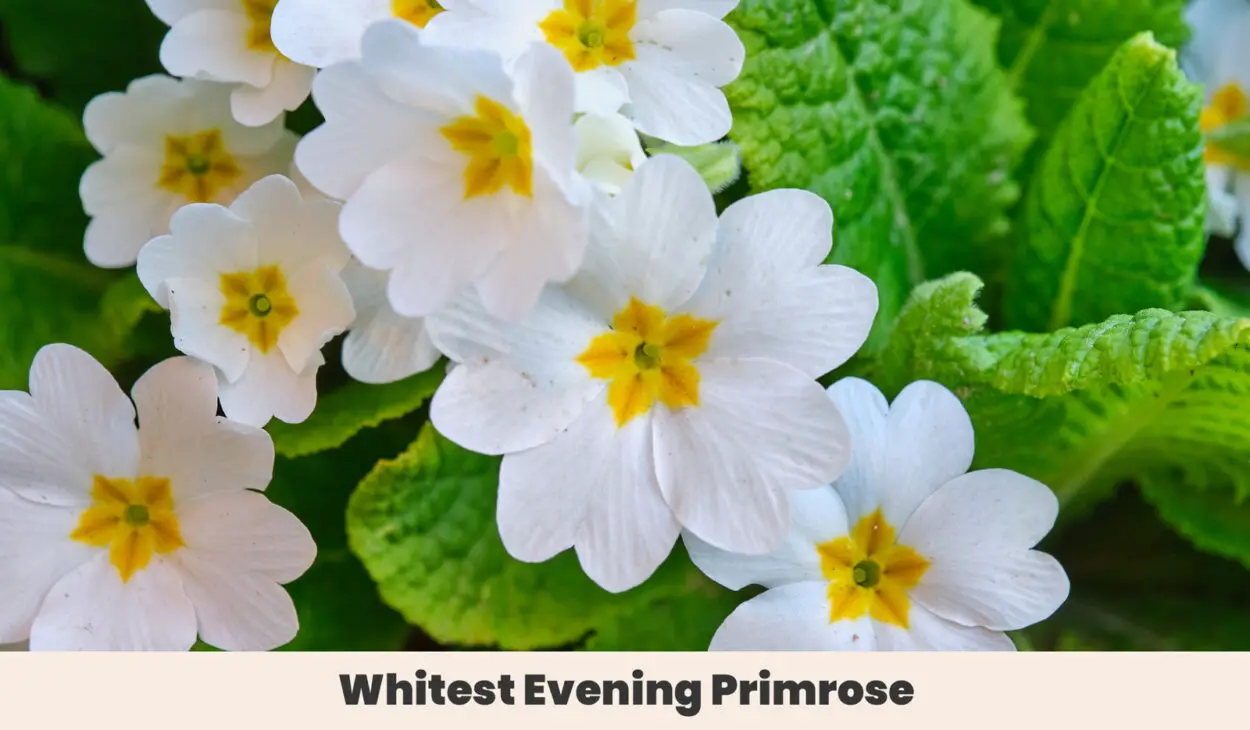
While it may seem like a bragging name, the whitest evening primrose is, indeed, very white. It’s a desert specialist native to the American Southwest, where it can be found in sandy dry grasslands.
It’s bright blooms open at night, their luminous petals and powerful fragrance drawing night-time visitors like nectar-loving moths. Like many desert plants, the whitest evening primrose does well in disturbed areas like dusty roadsides and abandoned fields. It brings beauty to even the most abandoned of places.
| Botanical Name: | Oenothera albicaulis |
| Growth Rate: | Moderate |
| Native Range: | Southwestern United States |
| Hardiness Zones: | 4 to 8 |
| Soil Needs: | Dry sandy and loamy soils. |
| Exposure: | Full sun |
| Blooming Period: | Summer |
| Water needs: | Low |
8. Woolly thyme (Thymus serpyllum)

Wooly thyme is a fragrant wonder. Both the flowers and the leaves are a treat to the senses, with richly scented leaves that are soft to the touch and bright purple flowers that spread like a haze across the surface of the plant.
It’s a low, methodical creeper, a woolly ground cover that spreads to fill whatever space it’s offered. It’s sometimes suggested as a replacement for lawns, as it supports pollinators and requires far less upkeep than grass.
| Botanical Name: | Thymus serpyllum |
| Growth Rate: | Rapid |
| Native Range: | Northern Europe, Western Asia, and Northern Africa |
| Hardiness Zones: | 4a to 9b |
| Soil Needs: | Well-draining sandy or loamy soils. |
| Exposure: | Full sun |
| Blooming Period: | Summer |
| Water needs: | Low; drought resistant when established |
10. Wild Violet (Viola sororia)
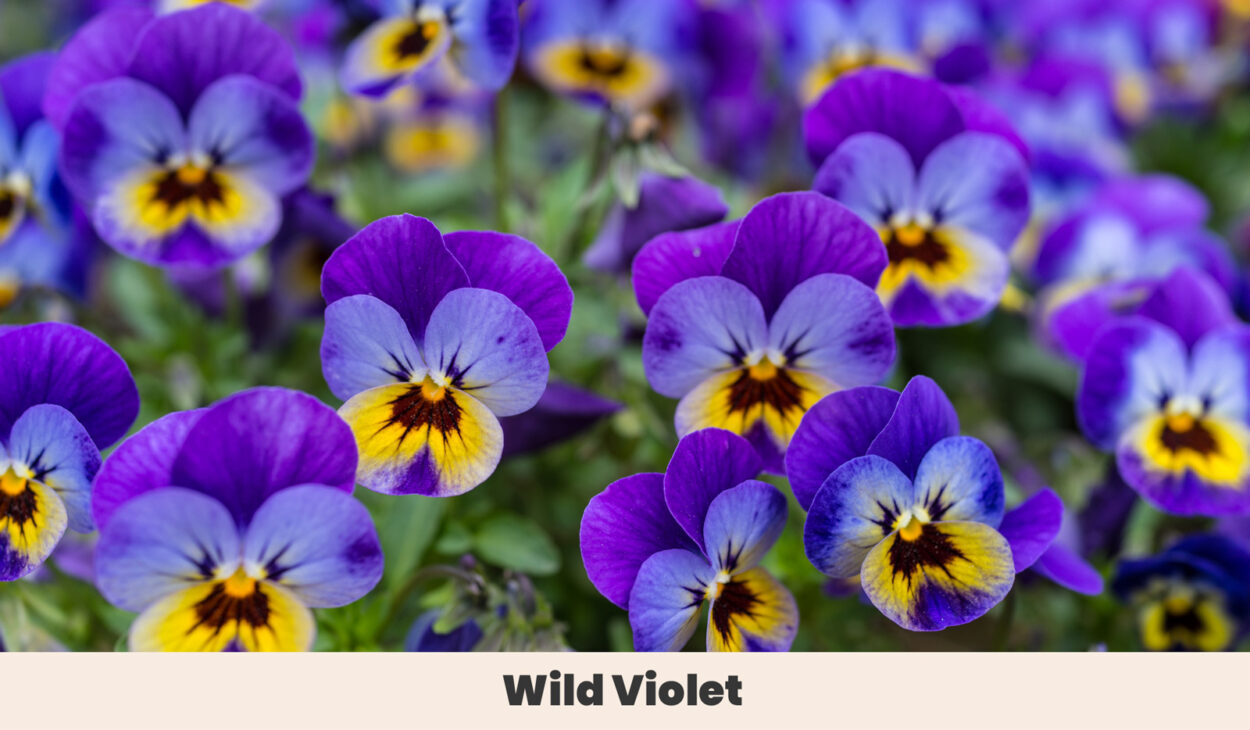
A hidden treasure of woodlands and glades, the wild violet is a small, delicate purple flower no more than a few inches tall. Despite its diminutive size, it’s a valuable source of forage for all manner of nectar-loving insects like bees and butterflies.
In the garden, it’s particularly useful as a border feature, especially in moist shady areas that other plants would find inhospitable. I particularly enjoy how these tiny treasures slowly spread over the years, becoming a stunning mass display despite the small size of each individual bloom.
| Botanical Name: | Viola sororia |
| Growth Rate: | Rapid |
| Native Range: | Eastern and Central United States |
| Hardiness Zones: | 3a to 7b |
| Soil Needs: | Moist, organically rich soil of most types |
| Exposure: | Full sun to deep shade |
| Blooming Period: | Spring to summer |
| Water needs: | High |
11. Wishbone Flower (Torenia fournieri)
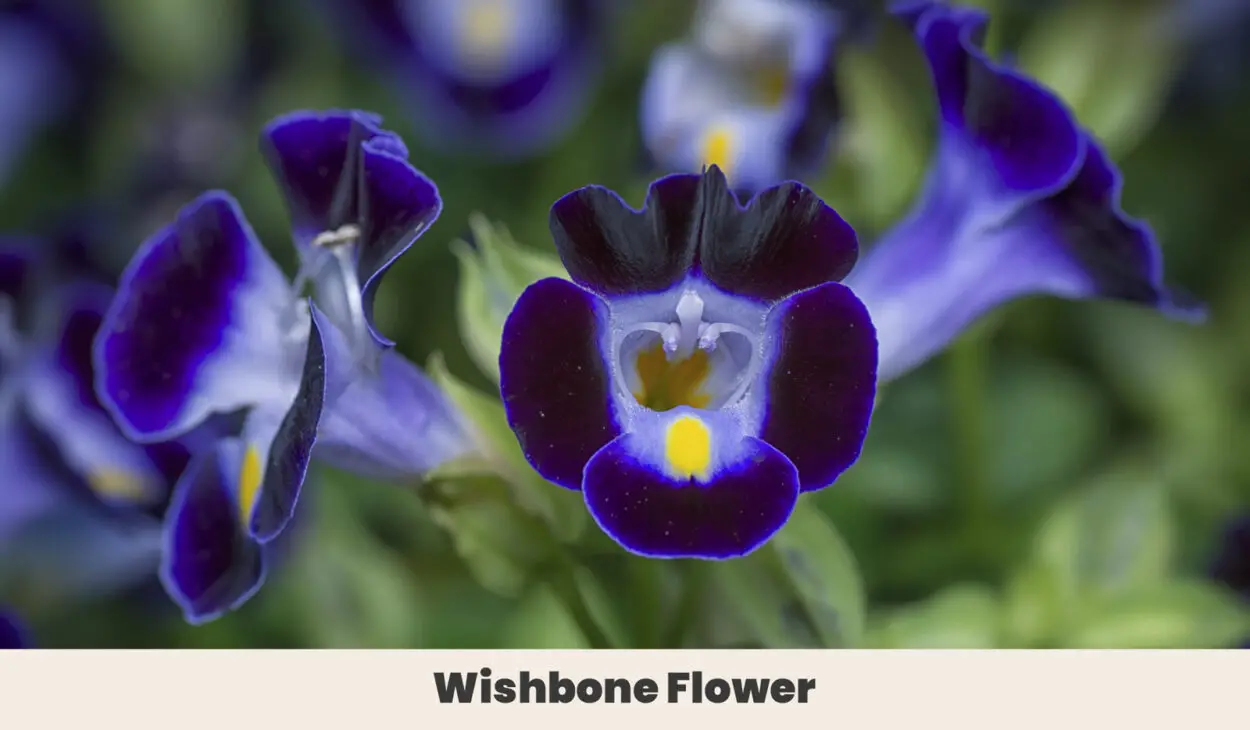
Like a wish fulfilled, the wishbone flower is a lovely bicolored blossom perfect for containers or baskets. It produces delicate mauve flowers with a characteristic wishbone-shaped dark marking, a single coil of gold leading into its heart.
Savvy horticulturalists have broadened the natural range of color and it’s possible for pink, burgundy, white, or even blue variants to bring their good luck to your garden. The promise of fortune is enough to lure in hummingbirds and other nectar lovers, too.
| Botanical Name: | Torenia fournieri |
| Growth Rate: | Moderate |
| Native Range: | Asia |
| Hardiness Zones: | 2 to 11 |
| Soil Needs: | Well draining, organically rich soils |
| Exposure: | Partial to full shade |
| Blooming Period: | Summer to fall |
| Water needs: | Moderate |
Final thoughts
What wonders wait for those who willingly welcome wonderful wildflowers into their gardens? When you water, weed and fertilize a wilderness, you will win a whole wonderland of whimsical flowers and well-formed leaves. It’s worth the work!

